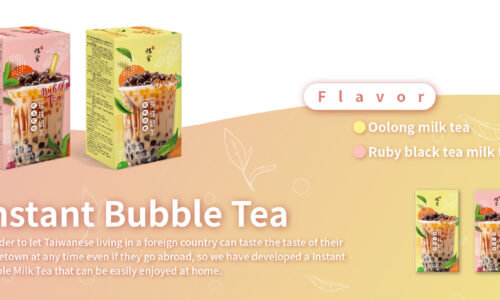Innova Market Insights released the top 10 trends of the global food industry in 2023, and “redefining value” ranked first among the top 10 trends.
Through the survey of global consumers in the past year, more than half of consumers believe that cost and cost performance have become more important. At the trend conference, Ms. Lu Ann Williams, Director of Global Market Insights and Innovation, said: Consumers are looking for brands that are willing to listen, understand and respond to their core values, and “redefining value” will lead 2023.
Trend 1: Redefining Value
In response to changes in the supply chain, enterprises can increase prices, reduce portions, and replace formulas in the short term. Providing products with the best cost performance to consumers is the best long-term strategy. If you want to provide better cost-effective products, you must first understand which aspects consumers are willing to make trade-offs. Most consumers want fresh, locally produced food and food with functional ingredients, and expect enterprises to take responsibility for environmental protection. From the behavior of consumers, it can be found that under economic pressure, consumers hope to save money while caring for the earth, so they choose more economical means to support environmental protection. Enterprises can take actions based on consumers’ multiple demands on economy, health, and social responsibility.
Trend 2:Affordable Nutrition
When consumers buy food, they are most concerned about rising prices and rising living costs, but consumers’ demand for nutrition from diet is only increasing, so consumers are becoming more budget-conscious. Food enterprises also have to face greater challenges to maximize the use of raw materials, improve production efficiency, reduce production costs, and at the same time meet consumers’ requirements for quality and nutrition. It can be seen that the innovation of food enterprises should focus on making basic nutrition affordable for consumers.
Trend 3 : Generational Push
Consumers of all ages pay attention to whether health and price are appropriate, but different generations also have different priorities when purchasing. The choice of food represents the attitude and lifestyle of consumers, especially the younger generation and young consumers. Most of the Generation Z pay more attention to the taste than the price factor, the millennials pay attention to the price factor and then consider the taste, and the X generation and the baby boomers consider nature more than the taste. Young people express their attitudes through food, and use food to show their lives on social platforms. Generation Z has established many communities, thus gaining a strong voice. These young people are willing to explore food, are open to novel flavors of food, and are willing to actively interact with brands, so they also have the ability to reshape the market and create trends.
Trend 4: Plant-Based- Unlocking a New Narrative
Consumers’ perception of plant-based products has changed. Instead of imitating or replacing animal-based products, they have opened up independent market segments and created huge innovation space for enterprises. The survey pointed out that consumers are reluctant to buy plant-based products for the following three reasons: consumers’ concerns about the taste and taste of plant-based products, doubts about price and value, and products that are overly processed or contain artificial ingredients. Combined with consumers’ new expectations for a plant-based independent segment, enterprises can use cutting-edge technologies or experiment with underutilized food ingredients and product formats. Whether it’s pre-made dishes, meal kits, or creative recipes, consumers are looking for more creative food in a variety of products.
Trend 5:Farming the Future
There is a growing public interest in innovative agricultural technologies that can improve the quality and sustainability of food production. As consumers pay more attention to agriculture, there are more opportunities for enterprises to enhance their brand image through agriculture, especially meat and dairy enterprises. Various emerging agricultural technologies such as “regenerative agriculture” and “vertical farming” have once again aroused public attention to agriculture. The top three reasons consumers buy new agricultural technology products are: more natural/organic, better for the planet, and reduced health risks. When businesses can communicate how new forms of agriculture benefit farmers, people, and the planet, they can create stronger connections with consumers who care about environmental and social issues.
Trend 6:Quick Quality
The home cooking boom triggered by the epidemic will continue. With the gradual return to daily and busy life, time-saving, labor-saving, fresh, and delicious products will become more popular. Two-thirds of global consumers want an easy and convenient way to ensure their daily nutritional intake. Therefore, meal kits have become a new choice. The cooking package can not only provide high-quality ingredients but also attach a very creative cooking guide to create a better experience for consumers who like to cook or want to improve their cooking skills. In addition to convenience, consumers also consider cheap, fresh, and healthy ingredients when choosing food and cooking packages.
Trend 7: Devouring Digital
The online world is growing bigger, faster, more immersive, and more connected. Virtuality and reality are merging, and the boundaries between the two are becoming more and more blurred. Some brands develop in two directions: functional and entertaining. For example, to provide consumers with the ultimate customized nutritional products or services, to try more abstract innovative ways of playing, or to connect with consumers through emerging platforms. Use digital means to enhance the experience of reality and create infinite possibilities to meet more audiences.
Trend 8:Revenge Spending
Despite the tough economic climate, consumers crave pleasurable, indulgent experiences. From the survey, it can be found that some respondents think that their financial situation is not as good as before, but three out of five of them also said that when they see products with innovative flavors or tastes, they may make an impulse purchase. With people under pressure to spend more, small pleasures, and small indulgences can have a greater impact. Brands can therefore elevate consumers’ moods, stimulate their senses, and breathe new life into old products by introducing limited editions or interesting collaborations. Deeply exploring the public’s desire for inspiration and surprise can change the perception and brand positioning of consumers, especially the younger generation.
Trend 9:Unpuzzle Health
Nowadays, the communication environment in the food market is becoming more and more complex. Brands need to skillfully find a balance point. Consumers are eager to know the health and nutritional value of products, and packaging is their preferred source of information. The endorsement of the product by a well-known organization printed on the product package does help to simplify information and build trust, but in an increasingly complex communication environment, it may appear too simple and cause consumers to question it. To enhance the audience’s trust in health claims, product information needs to be clear, accurate, certified by professional institutions, and consistent with consumers’ experience.
Trend 10:Positively Imperfect
Consumers have a better understanding of the difficulty and complexity of sustainable development. There is no good or bad way to achieve sustainable development, what is more, important is to clearly define the priorities and create the best results. According to the survey, more than three-fifths of consumers around the world said that when brands communicate more sincerely the challenges and efforts they face in environmental protection, their trust in brands will increase. 62% of global consumers said that When companies are willing to communicate the difficulties they encounter, consumers will feel more involved. Enterprises may make compromise choices, but if they develop for the good in general and sincerely explain and explain their goals to the public, such an approach is easier to be accepted and understood than before. Consumers know that enterprises cannot be perfect forever, but if a company demonstrates its unremitting efforts to achieve sustainable development, consumers can gain more understanding.













